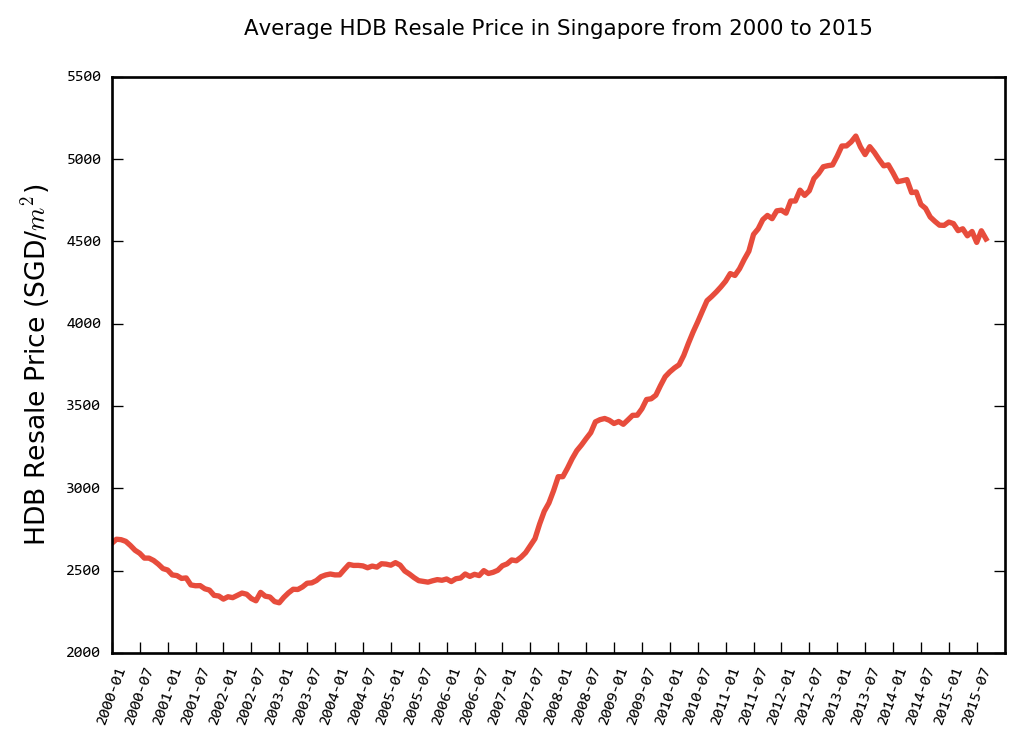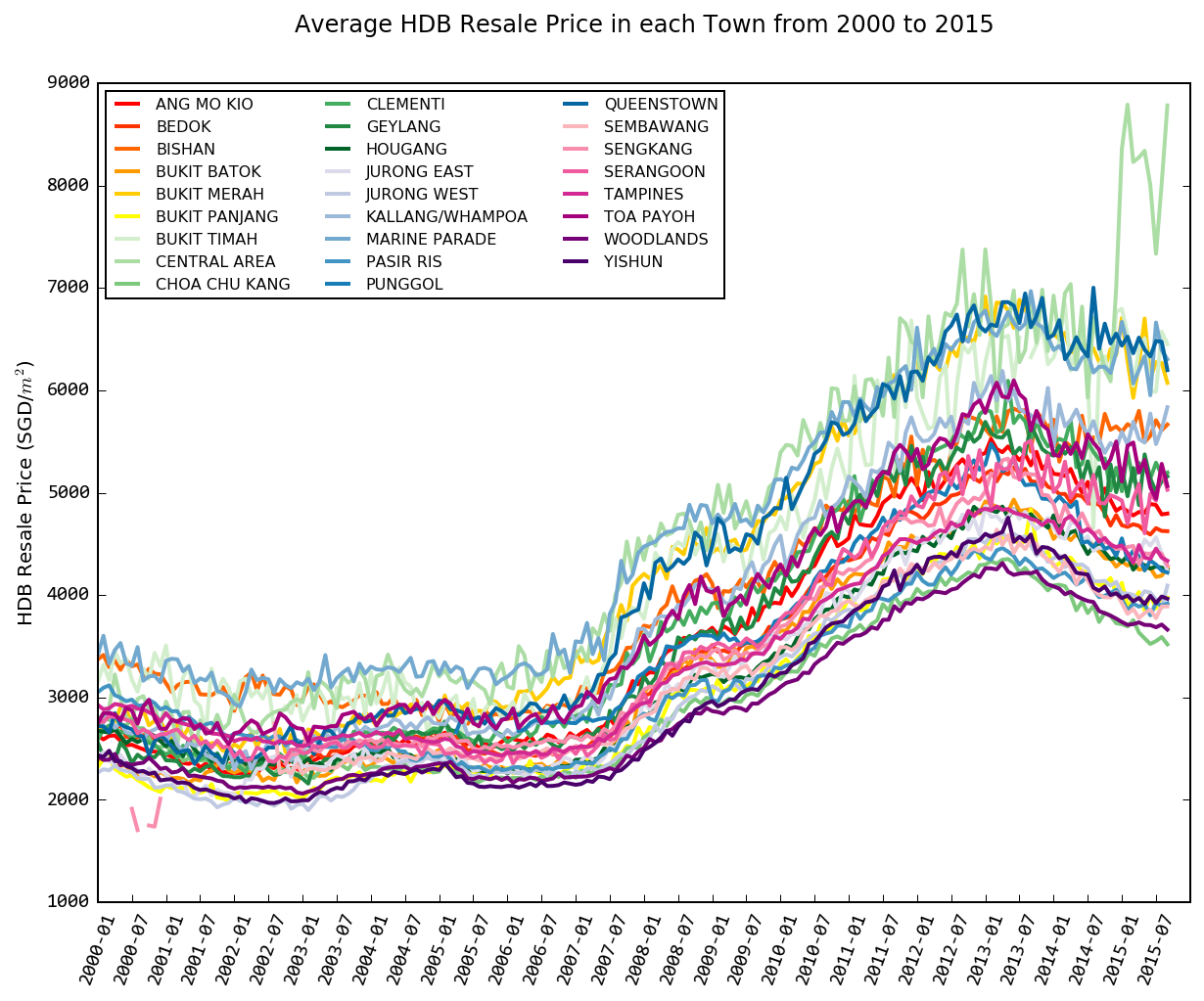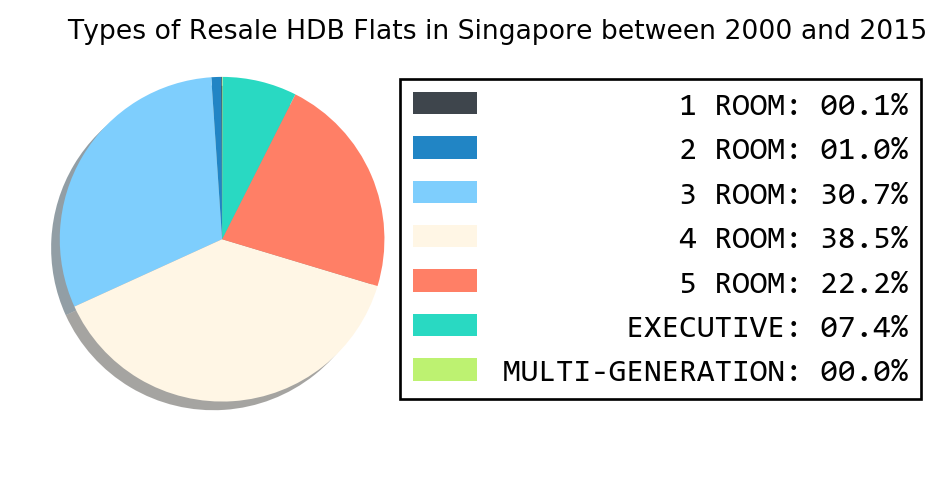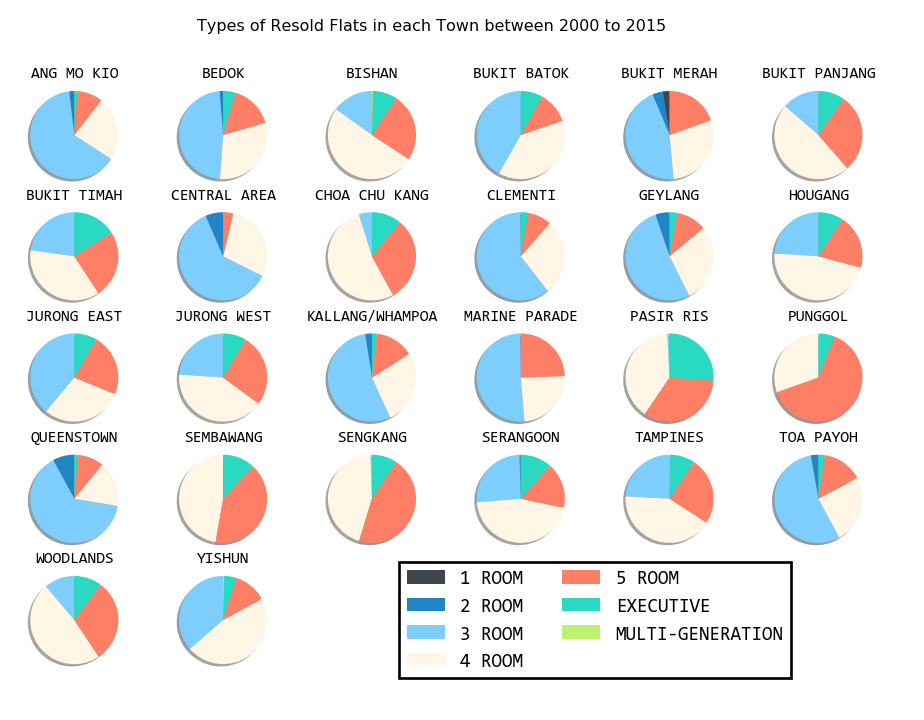Singapore HDB Resale Price from 2000 to 2015
24 Dec 2015
More than 80% of Singaporeans are living in public housing provided by HDB, the Housing and Development Board. This particularly large ratio makes the price of HDB flats a key concern for almost every family in Singapore.
As the most transparent government in Asia, Singapore’s government publishes records of HDB flat resale prices regularly. The data can be downloaded from the government’s public data site: Resale Flat Prices.
In the rest of this post, I will use Pandas to analyze the HDB resale data
and use MatplotLib to visualize the data for more intuitive understandings.
Because of the limited layout I use, you can open the figures in this post
in new tab to view any details.
The Python code used to analyze data and produce all the figures in this post
can be found at this gist.
A bird’s eye view of the data
By combining all three CSV files downloaded from the link above, we obtain the HDB flat resale prices for all resale records in Singapore from 2000 to 2015. The obtained data contain details on each resold flat’s address, type, area, model, and resale price, and more. The total number of records from Jan 2000 to Aug 2015 is 435050, around 27700 records each year.
A bird’s eye view on the data can help give us an impression on how the price of resold HDB flats evolves. And here is the average price over the last 16 years. Please note that the prices are not adjusted by inflation.

The significant peak in the above figure reflects clearly how the exuberant housing market in 2012 and early 2013 was cooled down by the government’s various measures.
Region development
Averaging the prices for each town in Singapore tells us how the HDB flat resale price changes over time for different areas in Singapore.

By comparing the average price change from 2000 to 2015 for each town, it is easy to find out which town has got the greatest increase in real estate price and which town the least, giving us an impression on the development of different regions in Singapore.

The soaring of resale price in central area (nearly 300%) and the much weaker increase in boundary areas (~125% for Pasir Ris) shows us clearly the advantage of location in city development.
Effects of flat type
For a family considering buying an HDB flat, they may concern about the influence of location and flat types on flat price to help them decide where and which type they shall choose.
There are currently 7 types of HDB flat in Singapore. Their ratio in the resale market is shown in the following pie chart. The percentage of ‘Multi-generation’ flats, known as 3Gen flats, is extremely low: only 182 records in nearly 16 years. This is probably because of the low demand and strong eligibility requirement for resale of such kind of flats.

Considering the average flat price for each flat type in each town, we have the large figure below.

Interesting facts can be drawn immediately by looking at the figures above:
- Punggol, SengKang, and Sembawang are lately developed towns because they don’t have any HDB resale records in early 00s. It is reasonable to suppose that their development started somewhere around the beginning of their plots.
- Resale of Multi-generation HDB flats can be hardly found in any town, which is confirmed by the pie chart above.
- Resale of 1 Room HDB flats seems exists nowhere except in Bukit Merah.
- The relative ratio of each flat type differs significantly from town to town.
Here is another compiled figure demonstrating the ratio of each flat type resold in every town between 2000 and 2015. It’s easy to confirm that most 1 Room HDB flats resold are located in Bukit Merah.

With this figure, it is also easy and clear to have an impression of the flat type’s distribution in HDB flat resale market.
Summary
The open data on HDB flat resale really offers us a great insight into the development of Singapore and the current market of HDB flat resale in Singapore. Of course, this post is just a simple demonstration on what we can get from the data. There are much more interesting results lie in it to be uncovered than what I have already shown. Anyone who is interested in this topic can download the data files and run analysis on it.
Again, all the Python code used in this post can be found at this gist.
Til next time,
Jianfeng
at 17:50